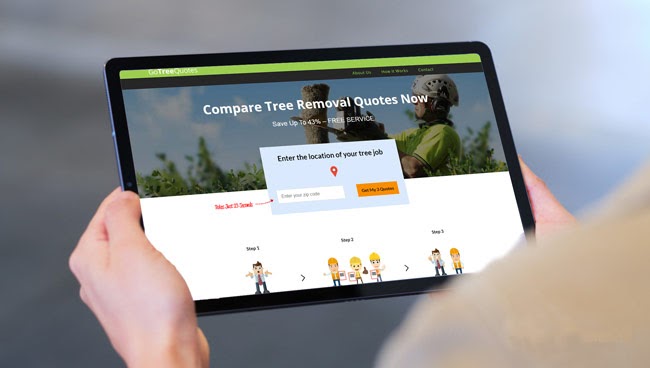The duty to upkeep trees on your property falls on you, but what happens when it comes to trees located in the right of way immediately in front of your property?
Who takes care of trees in the right of way depends on which county you live in. Some counties make it the sole responsibility1 of the owner to take care of the trees directly in front of their home, while other counties do it themselves.
You will need to look at the Tree Ordinance in your city or county here for more information.
What we cover
TogglePrivate vs public right of way trees
The law makes a distinction between private and public right-of-way trees. In most jurisdictions, a private tree is a tree whose whole trunk is on private land.
On the other hand, a tree on a public right of way is described as a tree located in:
- A tree lawn: The area between the curb and sidewalk and is usually planted with trees, grass, and other landscaping.
- A tree pit: A square or rectangle cut out of the pavement between the curb and sidewalk.
Note: Trees in the area behind the sidewalk, closer to private property, MAY be considered street trees.
Example of owners responsibility
Below is an example of what you might be required to do to maintain right-of-way trees2. Remember, this is just an example and you will need to look up your local county or city tree ordinance for more information.
- Prune tree branches so that they are at least 9 feet above sidewalks. Those branches that overhang the streets must be at least 11 feet above them.
- Trim trees and shrubs in the right-of-way so that sightlines to traffic, safety signs, or traffic signals are not obscured.
- Prune broken or dead branches of trees correctly to promote proper healing of the wound.
- Remove hazardous or dead trees.
Can I remove trees in the right of way?
In most jurisdictions, you cannot remove trees that are considered to be public right-of-way trees. At least not before obtaining a permit to do so. This is because these trees are generally considered to be public property.
However, if the tree’s whole trunk is on your property then it is considered a private tree and you can remove them. Make sure you get a permit if required.
How to get the city to remove right-of-way trees
To get the city to remove right-of-way trees, all you have to do is to give the city sufficient notice. In most jurisdictions, writing a letter that is addressed to the city arborist and outlining the reasons why the removal of the trees is necessary. The reasons can be the trees posing a danger to the public, being irreparably damaged, being poisonous, obstructing the view of pedestrians or drivers at intersections, or having an adverse effect on utilities being provided by the city.
Tree trimming on county right of way laws
This is basically the same as removal, but if a branch of the public tree is encroaching on your property you have the right to trim it and throw the branches back on public land. You need to make sure it is legal to do so. It sounds confusing, but if a tree is say 15ft tall it may be legal to trim without permission. But if it is a 40 ft oak tree, you might need a permit first. So you will still need to check the local laws.
Difference between easement and right of way
An easement is a general term that encompasses a number of rights on land that someone other than the property owner has. These rights are considered to be burdens. And a right of way is just one of these burdens on the land.
Therefore, while all rights of way are easements, not all easements are rights of way.
Can you plant trees on right of way?
Generally, yes, you can plant trees on the right of way but most counties and cities have a list of preferred trees you must plant. You can just plant a palm tree if everyone else has a dogwood.
Use this free service to find a tree expert near you
If you need help figuring out your rights vis a vis public right-of-way areas, then you should definitely contact a local expert. The best way to do so is to start by visiting GoTreeQuotes.com. It offers a free service that quickly matches you with the top-voted local tree care experts in your area.
Using the website, you can get 3 estimates fast by real certified experts in your area in just 2 minutes. Here is how it works.
- You scroll to the top of the page and enter your Zip code.
- Answer questions about your problem areas
- Your details will be forwarded to three local experts.
- You will then receive a price estimate for the job and some friendly advice.
IMPORTANT: There is no obligation to hire. This is a free tool and service to be used at your pleasure.

- Bardon, R., & King, B. (2020) Who Is Responsible for the Trees? A Citizen Guide to Trees in the Community. <https://content.ces.ncsu.edu/who-is-responsible-for-the-trees-a-citizen-guide-to-trees-in-the-community> Accessed: 13-02-2024
- Ball, L. () Residents’ Responsibilities for Right-of-Way Trees. <https://www.marpletreecommission.com/residents-responsibilities-for-right-of-way-trees/> Accessed: 13-02-2024




